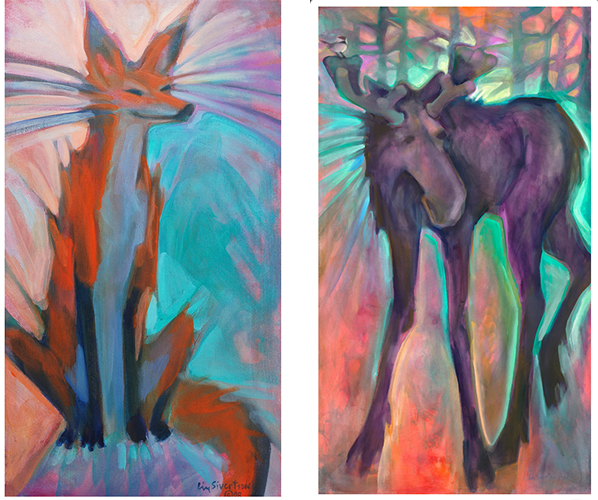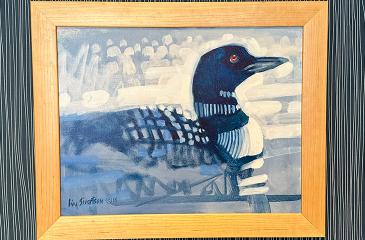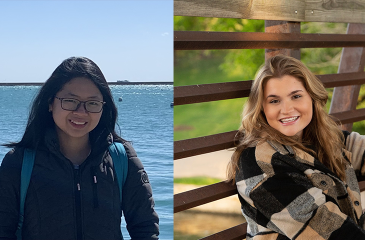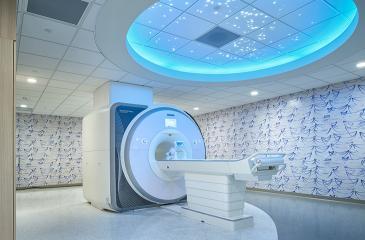MIDB Artwork Spotlight: Paintings of North Woods Critters

Liz Sivertson is known for her paintings of colorful images of the North Woods. Three of those pieces - Local Sage, Symbiosis, and Where Ruby Got Her Name - are now part of MIDB's permanent art collection.
Melissa Critchly, a member of MIDB's Art Program Committee, says, "There are two reasons we selected these pieces by Liz. She is a rather well-known Minnesota artist who has been making work of Minnesota animals and landscapes for decades. We also wanted to maintain the original idea of 'bringing the natural outside world around MIDB to the inside,' and Liz does that with these Minnesotan animal pieces."
Sivertson comes from an artistic family. Her sister owns the Sivertson Gallery, and her father, Howard Sivertson, is a well-known painter and illustrator who grew up on Isle Royale in Lake Superior.
According to her online bio, Sivertson has lived near Lake Superior most of her life. The big lake features prominently in her work, including her illustrations for the children's book "North Country Spring." She currently resides just over the hill from Grand Marais in a small house/studio. Her easel stands at the window with a big view where she paints whimsical and richly-colored images of the North Woods—from moose to bears to brilliant northern lights. She graduated from the University of Minnesota Duluth and has been painting seriously since the late 1980s.



